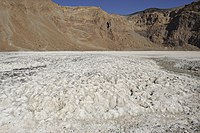
Photo from wikipedia
Stellate and plate-like carbonate bodies, traditionally called anthraconites, are found throughout the Baltic-Ladoga Klint in bituminous shale of the Koporye Formation (Tremadocian, Lower Ordovician). Although this time interval is usually… Click to show full abstract
Stellate and plate-like carbonate bodies, traditionally called anthraconites, are found throughout the Baltic-Ladoga Klint in bituminous shale of the Koporye Formation (Tremadocian, Lower Ordovician). Although this time interval is usually considered as a greenhouse, there is some evidence for the existence of at least temporary cold conditions during the Cambrian–Ordovician. However, the origin of anthraconites is still strongly debated. We studied the mineralogical, petrographic, cathodoluminescence, geochemical, and isotopic characteristics of anthraconites from five sections of the Russian part of the Baltic paleobasin. A close similarity between the morphological, petrographic, cathodoluminescence, and isotopic characteristics of the studied anthraconites with those of glendonites allow us to suggest that these bodies formed in a similar paleo-environment and should be considered as pseudomorphs of the mineral ikaite. The oxygen and carbon isotope ratios reveal that ikaite precipitation occurred in low-temperature conditions on the seafloor. The carbon isotopic values reveal influence of inorganic seawater carbon along with organic matter decomposition and/or methane oxidation during ikaite-glendonite transformations. The oxygen isotopic composition significantly changed after deposition due to meteoric diagenesis. We propose that the studied Tremadocian anthraconites formed under a region of upwelling, where cold phosphate-rich deep waters rose to the relatively shallow part of the Baltic paleobasin, providing favorable conditions for ikaite precipitation. Based on our cathodoluminescence study, we suggest that ikaite was transformed to calcite over several stages during diagenesis. Mineralogical studies also reveal that primary calcite was transformed to sulfate (gypsum) or dolomite during late superimposed processes.
Journal Title: Minerals
Year Published: 2019
Link to full text (if available)
Share on Social Media: Sign Up to like & get
recommendations!